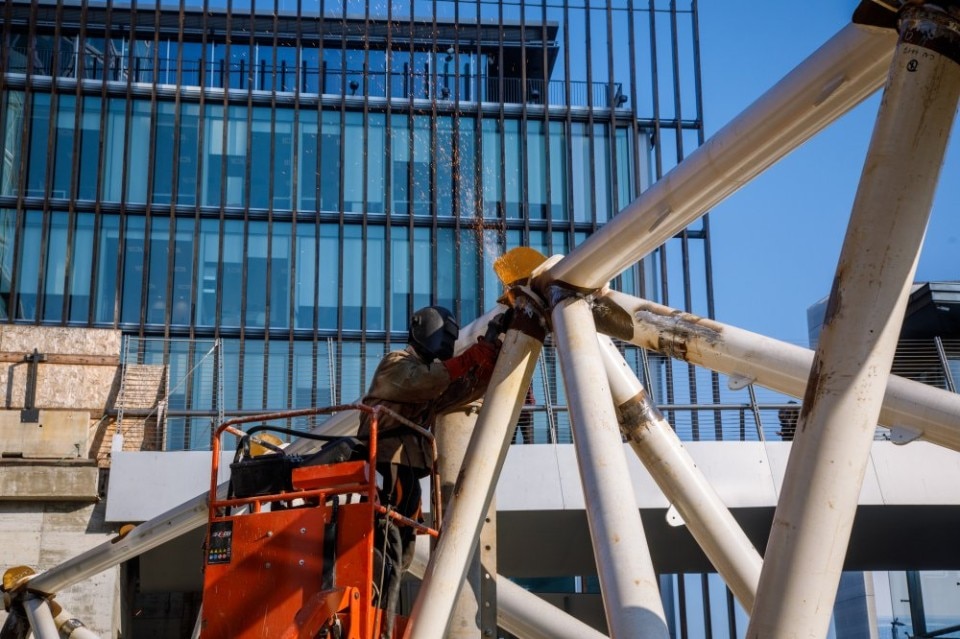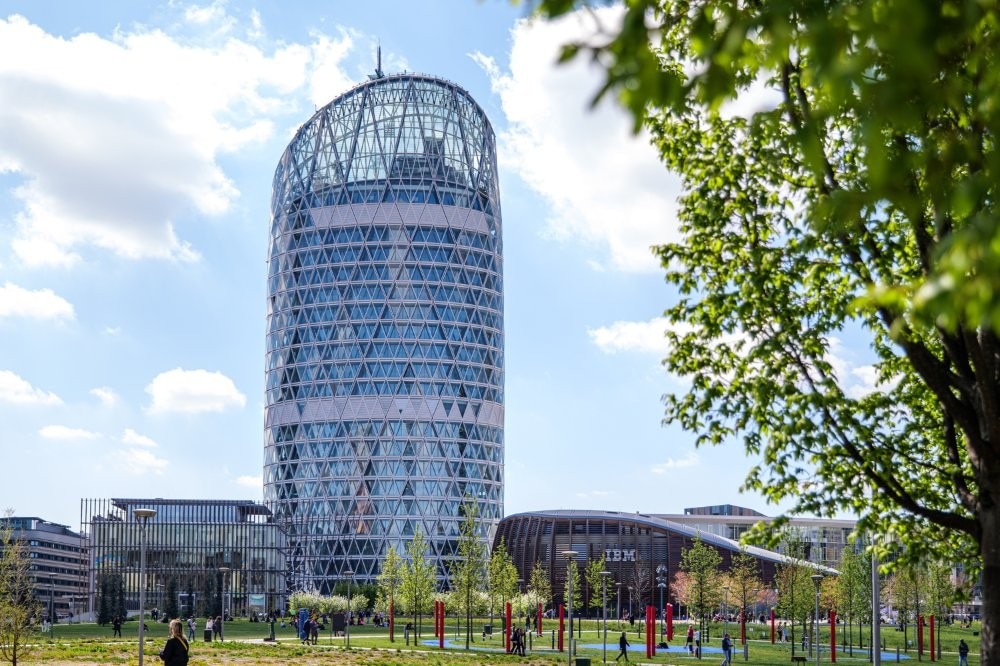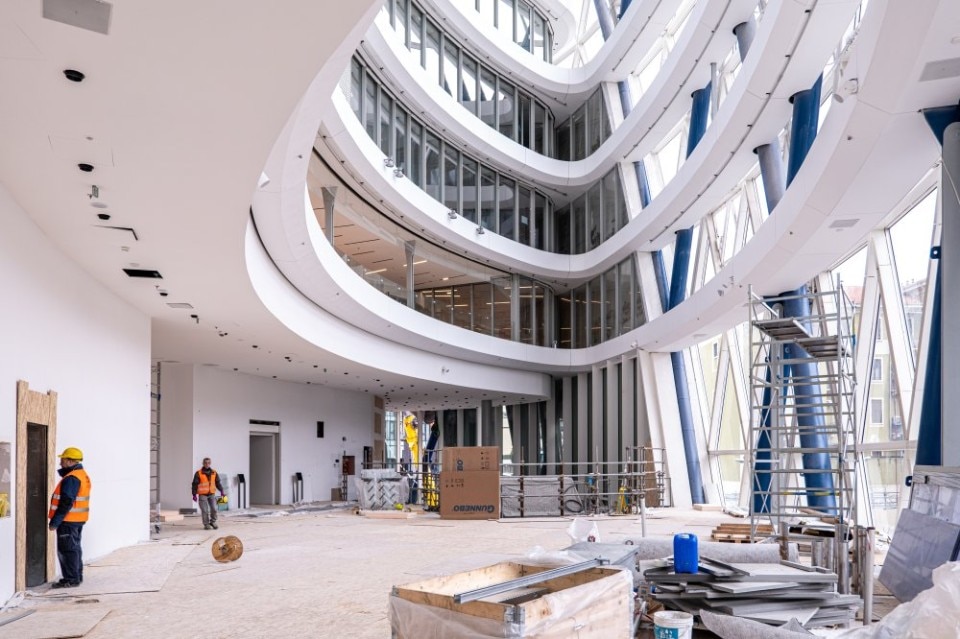The Unipol Tower in Milan is set to reach completion within the next few months. During our walkthrough of this evolving structure, we were accompanied by its designer, Mario Cucinella. He provided us with insights into the project’s genesis, its spatial, structural, and formal considerations. Most notably, he shared with us insights into the development process, telling us about the “construction site of a tower that is still essentially handmade, much akin to all contemporary construction”.
The impending completion of the Unipol Tower will also mark the conclusion of the extensive Operation Porta Nuova – Milan’s most impressive and important urban project throughout the 2000s. This endeavor significantly transformed the city’s downtown, giving it a global face and ambitious pace – finally, according to some, too late or unnecessarily, according to others. A challenging piece of this puzzle has been the small plot of land nestled at the intersection of Via Melchiorre Gioia and Via Fratelli Castiglioni. The stalemate was broken in 2014 when Unipol entered the scene. Through an exclusive competition, the corporation entrusted Mario Cucinella Architects with the task of erecting their new flagship office in the Lombard capital – a space expected to accommodate around 650 individuals.
.jpg.foto.rmedium.jpg)
Although undeniably impressive, Cucinella’s tower does not contend for the title of Italy’s tallest building. With a height of 124 meters and spanning 23 stories, it occupies roughly the seventeenth position within the country’s rankings. However, these rankings remain somewhat fluid due to the different measurement criteria used. It is also the second tallest Unipol building, overshadowed by its counterpart in Bologna, the Unipol headquarters, by a mere three meters. Within the contemporary urban panorama of Milan, the Tower assumes a role that is more characteristic than exceptional. It blends seamlessly into the city’s skyline, perpetuating the legacy of the skyscrapers built in the last fifteen years. For this reason, it is useful to tell its story, looking for similarities and differences with its counterparts.
Distinguished by its elliptical blueprint, an unprecedented feature in Milan, and its curved facades, the Unipol Tower shares a kinship with the organic architectural motifs displayed in I.M. Pei’s Palazzo Lombardia (2010), Cesar Pelli’s Unicredit Tower (2012), and two of three towers of City Life. Meanwhile, the crown exhibits an obliquely sliced configuration, connecting it conceptually to the neighboring Diamond Tower BNP Paribas by Kohn Pedersen Fox (2012). In both instances, the roof’s inclination adheres to the diagonals prescribed by building regulations, bridging the gap between existing and emerging structures – effectively a pragmatic modernization of Hugh Ferriss’s enigmatic 1920s New York aesthetic. A departure from Milan’s conventional architectural lexicon is observed in the facade’s composition. Here, the triangular modules within the structural steel mesh also double as an abstract embellishment across the seamless curtain wall.
.jpg.foto.rmedium.jpg)
The treatment of the building’s envelope stands as a pivotal aspect, strategically integrated to underscore its intended strength: sustainability. Nothing new here, right? Don’t worry, we’ll spare you the various types of systems and must-have certifications that come with these projects. What truly distinguishes this tower is that, not since the bygone era of Stefano Boeri’s collaboration with Gianandrea Barreca and Giovanni La Varra on Bosco Verticale (2014), has a Milan skyscraper effectively translated the consideration of sustainability into a compelling spatial innovation. Boeri’s visionary work involved the proliferation of miniature hanging gardens for residential use; Cucinella, on the other hand, focuses on the entrance hall.
The ventilated facade’s cavity, featuring an external layer of single glass and an internal layer of double glass, expands ingeniously to encompass a monumental atrium soaring 75 meters in height. This effect is intensified by the inclusion of two access points – one from Via Gioia and the other from the platform in Piazza Gae Aulenti. Cucinella defines this internal void as a “space of climatic moderation”, a concept whose efficacy we are eager to test during Milan’s summers. In any case, it is a compelling contemporary reinterpretation with a bioclimatic emphasis that recalls the approach of some iconic American headquarters from the 1960s. In particular, the Ford Foundation in New York by Kevin Roche and John Dinkeloo (1967) embodies this ethos. Regrettably, it appears that neither this space nor other impressive areas, such as the twenty-third-floor lounge or the striking fire-red staircase connecting the upper levels, will be open to the public.
Cucinella describes the Unipol Tower as Italy’s pioneering instance of fully parametric architecture, yet he does not hide the profound gap between digital design and the fundamentally artisanal construction process. The digital Building Information Modeling (BIM) framework encapsulating the building’s intricate details – its forms, materials, and constituents – promises instant dissemination to a wide range of workers, from novices to experts, and hundreds of suppliers. Yet the seamless translation of this digital information into tangible matter remains a work in progress. Thus, the construction site becomes a melting pot, where different human and digital languages converge, resulting in a reality where craftsmanship remains paramount. There is no shortage of small unforeseen events, some of which catch Cucinella himself off guard.

Cucinella also weaves a second, markedly more heroic, narrative around the site’s evolution. He underscores the pivotal role of meticulous supply planning, driven by the limited space that prohibited the accumulation of material – “just like in Manhattan”. Finally, he discusses the construction of the facade nodes: “They had to be built in mid-air, leaving no room for error. Also, the welding of the joints, a process that takes hours, had to be done in an instant, without interruption”. For this reason, the workers took turns in small temporary houses fastened to the already finished structure, elevated many meters above the ground.
Beyond being merely an anecdote, this scenario vividly captures the depth of both intellectual and human efforts indispensable in creating a grand-scale structure such as the Unipol Tower. This aspect often tends to fade into the background, overshadowed by the allure of the gleaming, seemingly effortless urban skylines that characterize modern cities.











.jpg.foto.rmedium.png)













.jpg.foto.rmedium.png)
.jpg.foto.rmedium.png)
.jpg.foto.rmedium.png)
.jpg)
.jpg.foto.rmedium.png)
.jpg.foto.rmedium.png)
.jpg.foto.rmedium.png)
.jpg.foto.rmedium.png)
.jpg.foto.rmedium.png)
.jpg.foto.rmedium.png)